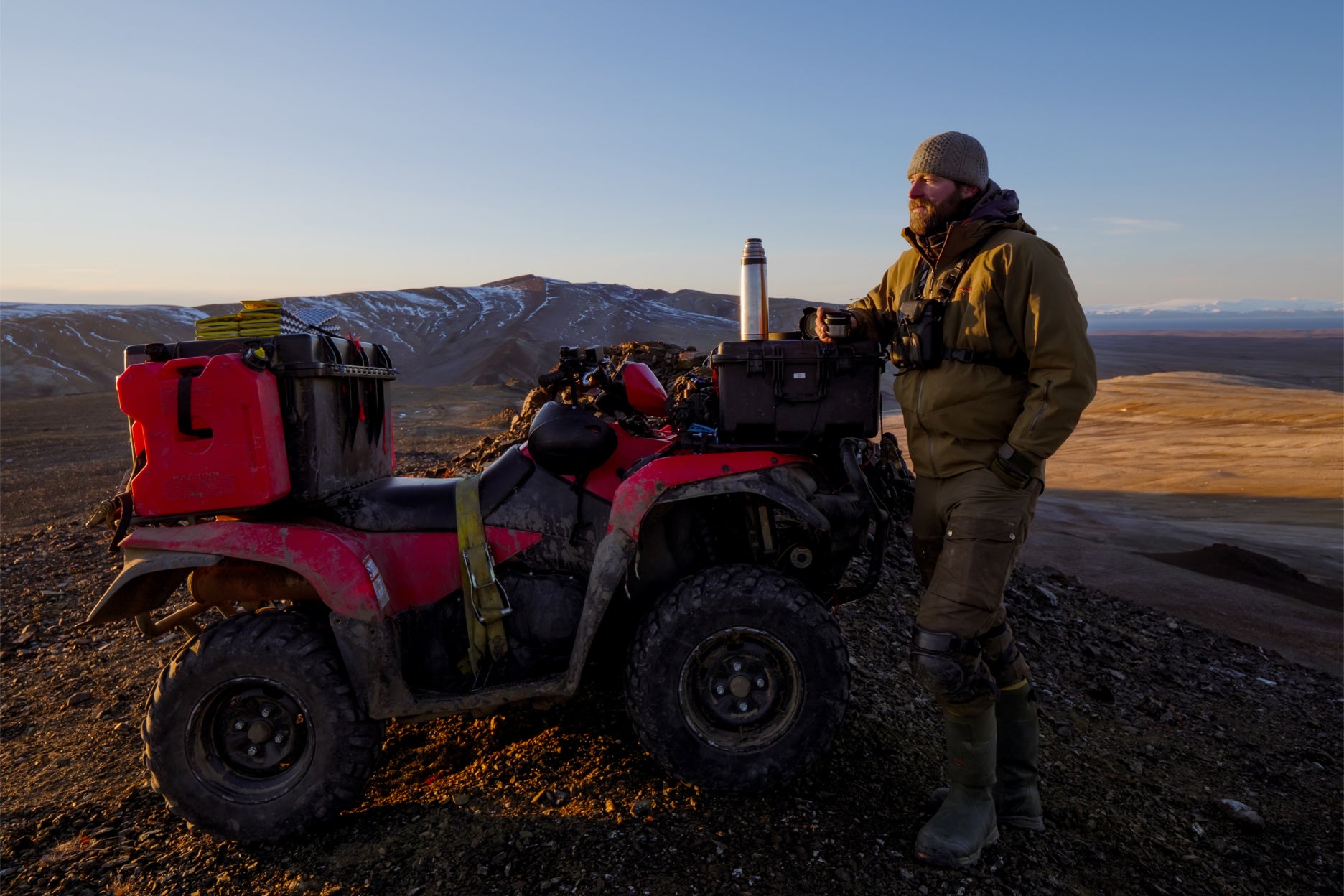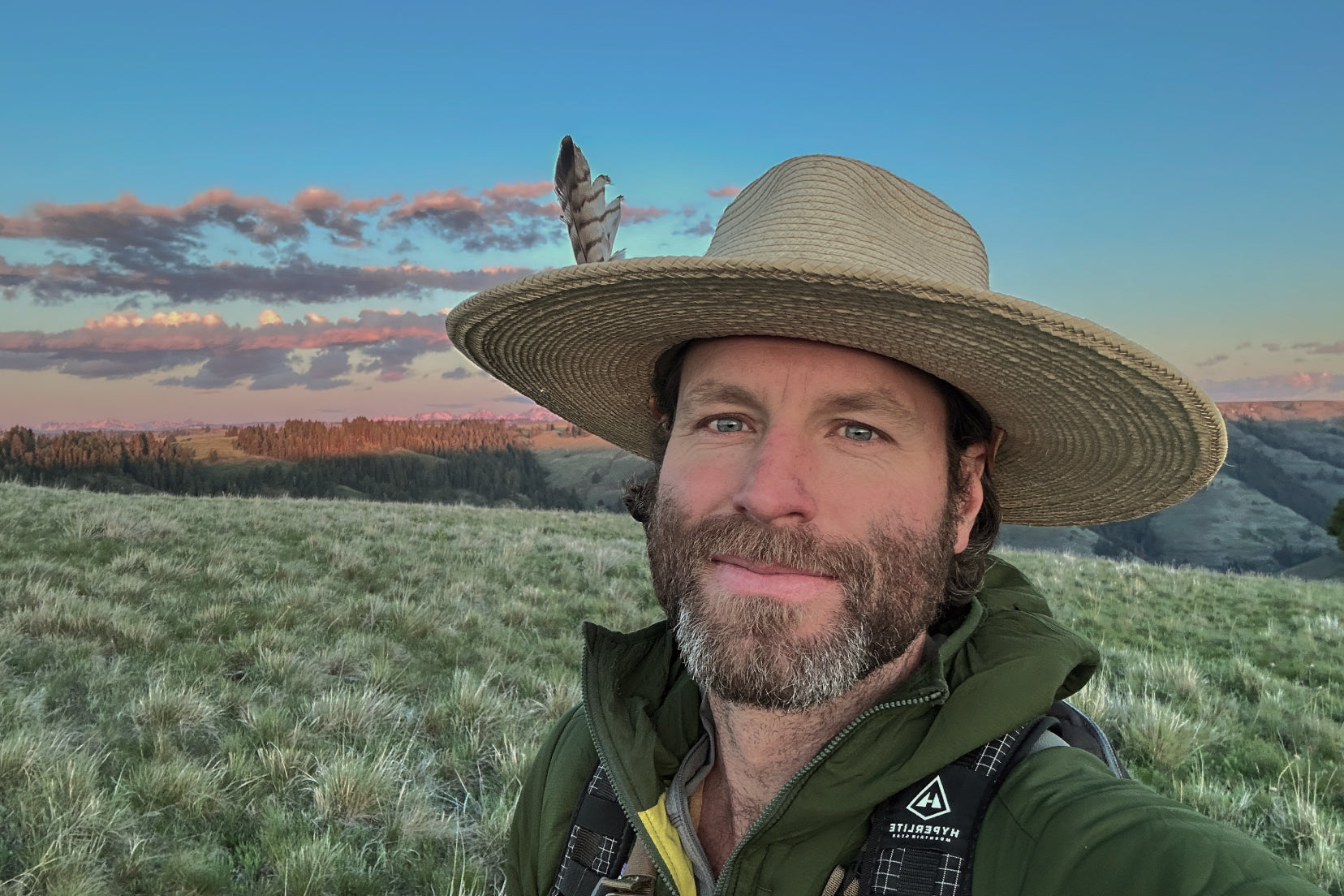
In a quiet corner of the Natural History Museum, located at the center of city life, wolves run across the walls—feral, familial, and free. Captured through the patient, reverent lens of National Geographic explorer Ronan Donovan, these images and videos form the backbone of “Wolves,” an exhibition as intimate as it is expansive, highlighting the contrast between wolves living in perceived competition with humans in the Greater Yellowstone Ecosystem and those living on Ellesmere Island in the high Canadian Arctic, undisturbed by human interference.
In a quiet corner of the Natural History Museum, located at the center of city life, wolves run across the walls—feral, familial, and free. Captured through the patient, reverent lens of National Geographic explorer Ronan Donovan, these images and videos form the backbone of “Wolves,” an exhibition as intimate as it is expansive, highlighting the contrast between wolves living in perceived competition with humans in the Greater Yellowstone Ecosystem and those living on Ellesmere Island in the high Canadian Arctic, undisturbed by human interference.

But Donovan is not merely a photographer. He is a biologist by training, a storyteller by compulsion, and a seeker of the sacred wild. Over the last decade, he has lived among wolves, chimps, and mountain gorillas—mammals with intricate and essential family structures—not only to study them, but to better understand us. “That's something that I've been drawn towards in my time spent with these wild animals, where I've immersed myself for months or years at a time,” says Donovan. “How do we become more human, and also, how do I become more human? How do I embrace the pieces of myself that are wild and animalistic and more of my nature?” Through his work, Donovan offers more than visual spectacle; he offers parables for a species in crisis, reminders of what we once were, and quiet invitations to remember.
A Resistance Within
Donovan’s story begins in Vermont, nestled between unkempt woods and quiet rebellion. Raised by parents who carved a home from raw land, he was born into a world shaped by intention and independence. His mother served up meals from the Moosewood Cookbook while his father, an Outward Bound instructor, passed on lessons of resilience and risk.
Yet even in this seemingly idyllic setting, Donovan felt the stirrings of a wilder call. He was restless, oppositional, and pushed against the rigid walls of convention. He struggled in school, and even found himself on the wrong side of the law. That resistance, he now believes, was ancestral—a revolt against domestication itself. “There was this deep longing,” he says, “to allow those wild parts of myself to flourish and to be nourished. I was rebelling against the dysfunction that I felt around me, within my family and school.”
It’s a thread he continues to pull: the inner saboteur as inadvertent shepherd, the outsider as compass toward a deeper truth.
Moments of Unmitigated Magic
Donovan’s path to photography was neither linear nor planned. After college, he spent years as a field biologist, hiking the backcountry of Yosemite, tracking spotted owls, and climbing Sequoias. The camera came along as a quiet companion. In Uganda, working with a Harvard researcher studying chimpanzees, Donovan began photographing from the canopy, capturing moments of play and maternal tenderness that no ground-bound scientist could see.
It was here that the first seed took root: photography not as aesthetic but as access, not just a tool of observation, but transformation. A recommendation from a mentor led to a fateful connection at National Geographic. And that quiet, persistent thread—the longing for the undomesticated—continued its silent unfurling.
The Lucky Photo
Donovan’s breakout came in 2014, assisting legendary Nat Geo photographer Nick Nichols in Yellowstone. Originally hired to build camera traps and navigate the logistics of fieldwork, he soon found himself stepping into a fuller role. When the original wolf photographer stepped away, Donovan was offered the chance to fill in. One lucky image—that of former Yellowstone Wolf Project lead Doug Smith darting a wolf from a helicopter in order to collar it—captured the entirety of the scene with startling clarity. That photograph, a product of both technical mastery and magic, would mark a turning point for the burgeoning photographer.
Plenty of wolf images followed, captured under the gaze of canyon walls and wary eyes, embodying everything Donovan had not-so subconsciously sought: proximity to the primal, access to the untamed. Eventually, he’d find himself in the Arctic, photographing the beautiful white wolves of Ellesmere Island for a National Geographic TV series called Kingdom of the White Wolf.
Photos and video from this journey, along with his work in Yellowstone, form the backbone of the Wolves exhibition, offering a mirrored glimpse at lupine life: how the Arctic wolves hunt, play, travel, rest, and raise their young in one of the harshest environments on Earth, contrasted with the wolves of Yellowstone that are fearful of humans, making it nearly impossible to document intimate details of their daily lives.
The effect the exhibition has had on visitors is both tangible and invisible, moving like a shadow darting through the forest of the psyche. “I think the photography and videos really provide a sensory experience that's immeasurable,” says Donovan. “It starts to remind people that the wilderness, wild animals, and wolves specifically have a really important place in our emotional lives and in our relationship to the environment and others. Not only are wolves animals that we are closely tied to in the form of our domesticated dogs, but they're also animals that are really close to us in the human experience. There's this emotional connection and understanding that happens because we're also social animals. We are also wild, and the same forces that shaped wolves into their being, shaped us.”
A Natural Heart Space
Today, Donovan resides in Bozeman, Montana, a small but growing city teetering between the urban and wild, where the rhythms of nature and community blur. His work continues, but so does his rewilding—not only in forests or on assignment, but in ritual, in village-building, in reclaiming what civilization has silenced.
He hunts his own meat, not as sport but as sacrament. He teaches children to howl like wolves in classrooms from California to Montana. He tells stories not just of apex predators, but of his childhood, of our ancient connection to the land, and of the cost of forgetting. “Where I'm at in my life now,” says Donovan, “in terms of that lifelong longing, is a place where I’m learning to speak more from a natural, soulful heart space. Not just being science-minded, but sharing in a way that is more from the marrow of my own experience. I’m trying to speak more heart-to-heart than head-to-head, to get out of the modern, thinking mind and more into our sensing, wild selves.”
At the heart of it all is a question that pulses beneath every photograph, every howl, every shared silence with an animal. One that asks, What does it mean to be fully human in the modern world? And so Wolves is not merely an exhibit, but a crack in the asphalt, a trailhead to our ancestral memory, an invitation to the rewilding of the heart.
WRITTEN BY Andrew Pogany
#Stewardship